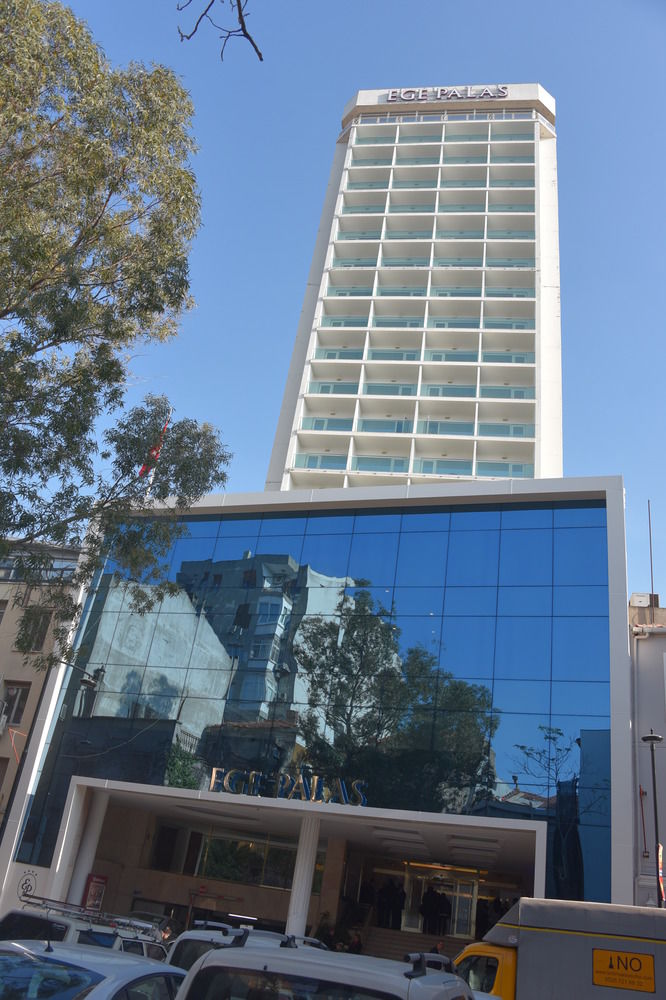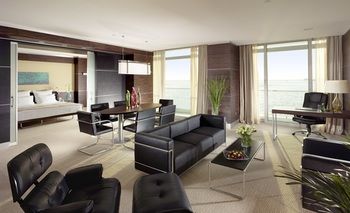
Find hotels in Izmir
Lowest prices detected by AI for hotels
Best
Cheapest
Star Ratings
AI Recommended
Best Hotels In Izmir
Cheapest Hotel Deals in Izmir
Top Rated Hotels
5 Star Hotels in Izmir
4 Star Hotels in Izmir
3 Star Hotels in Izmir
AI-recommended Destinations
Where to stay in Izmir
More About Izmir
“The 3 cities of Turkey”
İzmir (Turkish pronunciation: [ˈizmiɾ]) is a metropolitan city in the western extremity of Anatolia and the third most populous city in Turkey, after Istanbul and Ankara. It is the second most populous city on the Aegean Sea after Athens, Greece. In 2017, the city of İzmir had a population of 3,028,323, while İzmir Province had a total population of 4,279,677. İzmir's metropolitan area extends along the outlying waters of the Gulf of İzmir and inland to the north across the Gediz River delta; to the east along an alluvial plain created by several small streams; and to a slightly more rugged terrain in the south.
In classical antiquity the city was known as Smyrna, a name which remained in use in English and other foreign languages until the Turkish Postal Service Law (Posta Hizmet Kanunu) of 28 March 1930, which made the Turkish name İzmir the internationally recognized name of the city in most languages. However, the historic name Smyrna is still used today in some languages, such as Greek (Σμύρνη, Smýrnē), Italian (Smirne), and Spanish (Esmirna). İzmir has more than 3000 years of recorded urban history and up to 8500 years of history as a human settlement since the Neolithic period. Lying on an advantageous location at the head of a gulf running down in a deep indentation, midway on the western Anatolian coast, it has been one of the principal mercantile cities of the Mediterranean Sea for much of its history. İzmir hosted the Mediterranean Games in 1971 and the World University Games (Universiade) in 2005.
The city of İzmir is composed of several metropolitan districts. Of these, the district of Konak corresponds to historical İzmir, with this district's area having constituted the city's central "İzmir Municipality" (Turkish: İzmir Belediyesi) until 1984. With the formation of the "Greater İzmir Metropolitan Municipality" (Turkish: İzmir Büyükşehir Belediyesi), the city of İzmir grouped together its ten (initially nine) urban districts, namely Balçova, Bayraklı,
 Time UTC+03
Time UTC+03 Currency TRY
Currency TRY Languages Turkish, Kurdish, Dimli, Azeri, Kabardian
Languages Turkish, Kurdish, Dimli, Azeri, KabardianWhat’s Special about Staypia?
Compare hotel prices in real-time
AI finds you the lowest price for hotels in Izmir.
Lowest price for 3.16M hotels worldwide
Book with up to 31% extra discounts only for Staypia members.
Travel bucket list for Izmir
Plan your trip with over 17K 'must see' recommendations for Izmir
Frequently Asked Questions
The best 5 star hotels in Izmir are Swissotel Grand Efes Izmir, Hilton Izmir, Movenpick Hotel Izmir. Search for the most highly rated hotels in Izmir
The most highly rated hotels in Izmir are Swissotel Grand Efes Izmir, Wyndham Grand Izmir Ozdilek, Oglakcioglu Park Boutique Hotel.
Generally, room reservations are subject to a free refund until the cancellation deadline. Fees may apply after the cancellation deadline, so please check the cancellation deadline on your hotel voucher or in Menu > My Reservation.
If you’re a frequent traveler, Staypia is the best place to get the best hotel deals. You can book hotels with the lowest price of 3.16 million hotels collected by AI, and receive additional discounts for members only.


